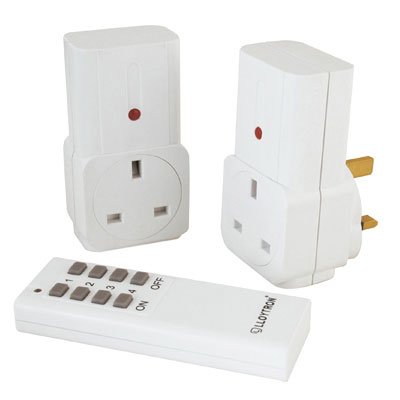Raspberry Pi Sous Vide Redux
TL;DR
My hardware and software setup for my Raspberry Pi sous vide setup have remained the same for over 5 years, but a failed remote controlled socket forced me to update almost everything.
Background
The Maplin remote control socket would turn on, and briefly supply power to the slow cooker, but then it would appear to trip. This wasn’t the first time, as the original socket failed after a few years, but this time there’s no chance of getting a replacement from Maplin as they’ve gone out of business.

A1210WH
After a bit of hunting around I tried ordering a Lloytron A1210WH socket set, as it looked identical to the Maplin one (and hence was likely to have come from the same original equipment manufacturer), but the package I received had the newer model A1211WH.

A1211WH
I could have returned them in the hope of getting some of the older ones from elsewhere, but I decided to bite the bullet and just make things work with the new ones.
Blind Alley
I had a go at using 433Utils, which was able to read different codes from the new remote with RFSniffer, but sending those codes using codesend just didn’t work (and didn’t even show the same code being played back on RFsniffer).
pilight
How I Automated My Home Fan with Raspberry Pi 3, RF Transmitter and HomeBridge had a similar issue with 433Utils, and used pilight to read codes from his remote then send them out from a Pi controlled transmitter.
Here began a bit of a struggle to get things working. My ancient Raspbian didn’t have dependencies needed by pilight, so I burned a new SD card with Raspbian Stretch Lite (and then enabled WiFi and SSH for headless access).
My initial attempts to use pilight-debug crashed on the rocks of missing config:
pilight no gpio-platform configured
In retrospect the error message was pretty meaningful, but Google didn’t help much with solutions, and all of the (pre version 8) example configs I’d seen didn’t have the crucial line for:
gpio-platform: "raspberrypi1b1"
That raspberry version maps to the options for the WiringX platform that sits within pilight.
With the config.json sorted for my setup (GPIO 0 to transmitter, and GPIO 7 to receiver [as a temporary replacement for the 1Wire temperature sensor]) I was able to capture button presses from the remote control. It quickly became apparent that there was no consistency between captures, and I’m guessing the timing circuits just aren’t that accurate. But the patterns of long(er) pulses to short(er) pulses were consistent, so I extracted codes that were a mixture of 1200us, 600us and a 7000us stop bit (gist with caps, my simplification, and generated commands).
Success
With timings in hand I was able to turn the new sockets on and off with pilight-send commands in shell scripts for on and off. It was then just a question of updating my control script to invoke those rather than the previous strogonanoff scripts (having migrated my entire sousvide directory from old SD to new via a jump box with a bit of tar and scp).
Filed under: Raspberry Pi | Leave a Comment
Tags: 433MHz, config.json, GPIO, pilight, remote control, Sous vide
No Responses Yet to “Raspberry Pi Sous Vide Redux”